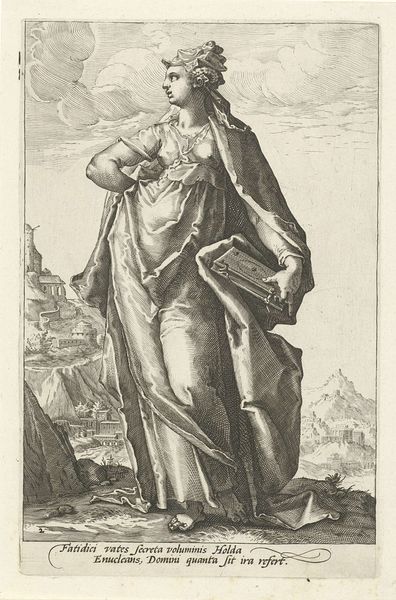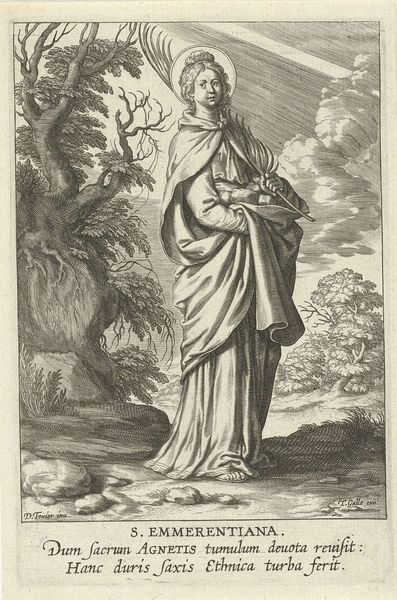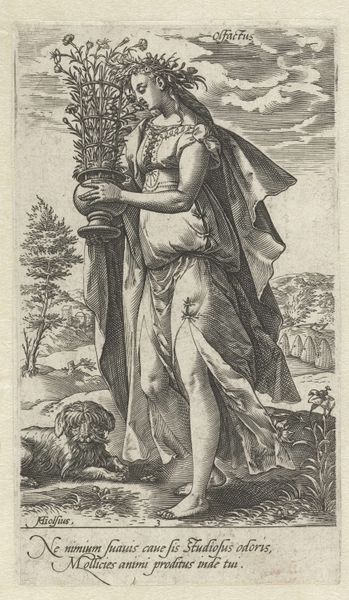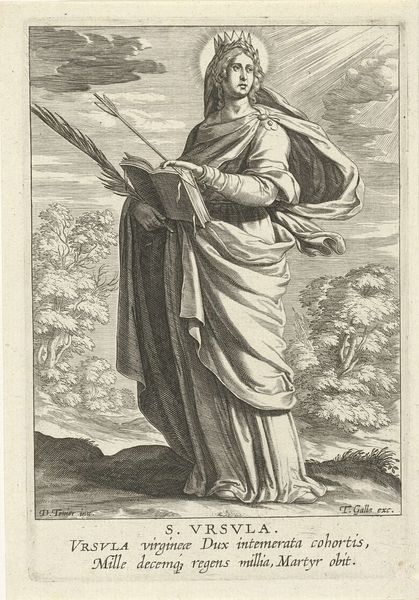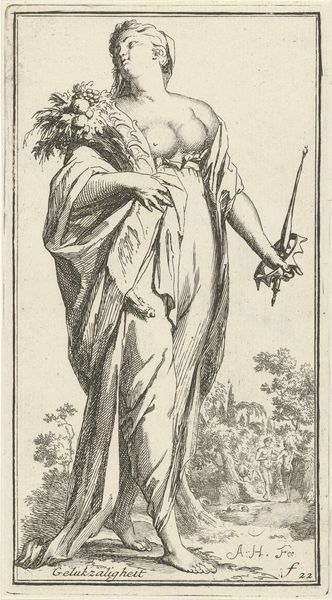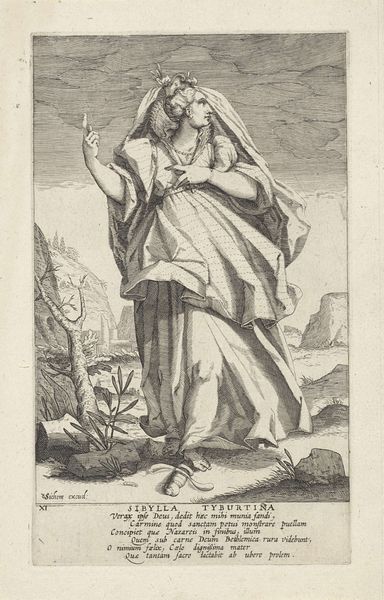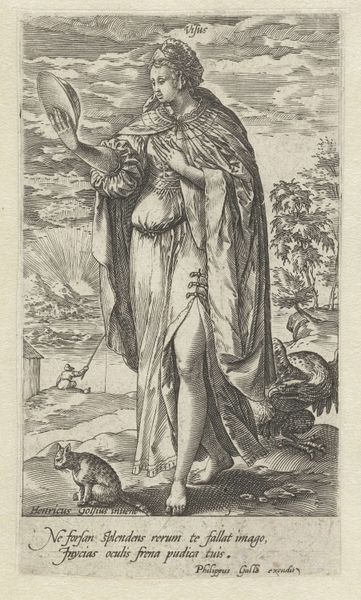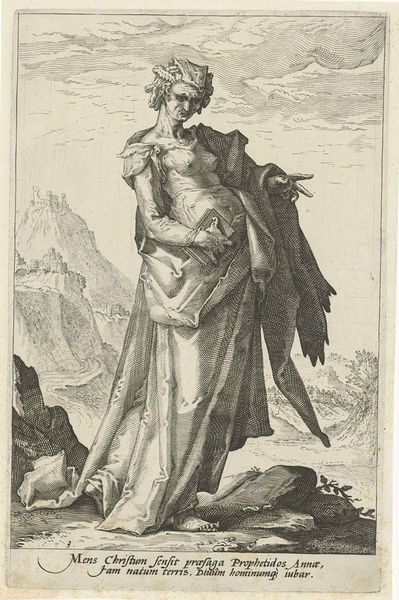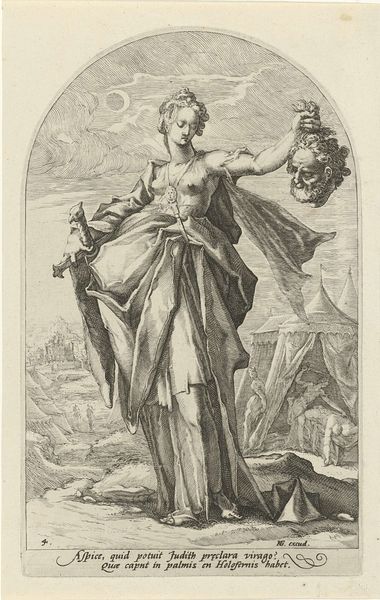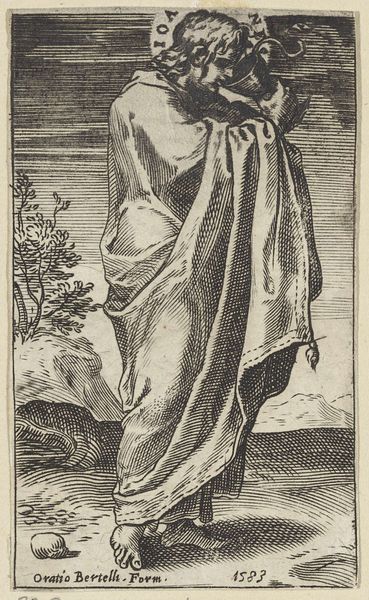
print, engraving
#
portrait
# print
#
mannerism
#
engraving
#
sword
Dimensions: height 151 mm, width 98 mm
Copyright: Rijks Museum: Open Domain
Curator: This engraving, “Heilige Catharina,” dating from 1581 to 1633, and residing here at the Rijksmuseum, was crafted by Theodoor Galle. It presents a classic depiction of Saint Catherine. What’s your initial take? Editor: It's striking! The detail is incredible for an engraving, especially in the drapery and hair. There’s a definite stillness and gravity to her presence. The textures feel palpable, and the scene is powerfully constructed using line and contrast. Curator: Galle masterfully used the medium to highlight Catherine's attributes and the socio-religious context of her story. Her gaze, for instance, carries the weight of defiance against the societal expectations placed upon women of her era, and her advocacy for Christian faith. We can unpack these narratives using the philosophical lens of power dynamics during the Counter-Reformation. Editor: Precisely. The very act of engraving—a laborious, repetitive process—mirrors the societal structures of the time, while the image itself serves as both propaganda and commodity. Note the placement of the sword at her feet. What was its manufacture and intended use, its potential economic and symbolic value for the engraver and commissioner at this historical moment? The sword, as a material object, stands testament to power, yet in this case also to its defeat. Curator: It also underscores Catherine's victory through knowledge, not force alone. Galle places her within a visual lineage that blends religious symbolism with elements of early portraiture. This representation intersects the sacred and the secular. I also consider Catherine, in this moment, as an activist that chose knowledge over complacency when confronting state tyranny. Editor: Good point. Galle’s decision to represent Saint Catherine in this way likely speaks volumes about the economic factors at play: the role of the engraver, the type of paper used, how this print was marketed, distributed. That tells us so much about the consumption of religious imagery in the period. Curator: Indeed. Thinking about its presence in our contemporary landscape allows us to understand not just the past but the ever-evolving dialogue between power, representation, and resistance. Editor: Agreed. Reflecting on the social implications of artistic practice deepens our appreciation for craft and provides the viewer a window onto society itself.
Comments
No comments
Be the first to comment and join the conversation on the ultimate creative platform.
